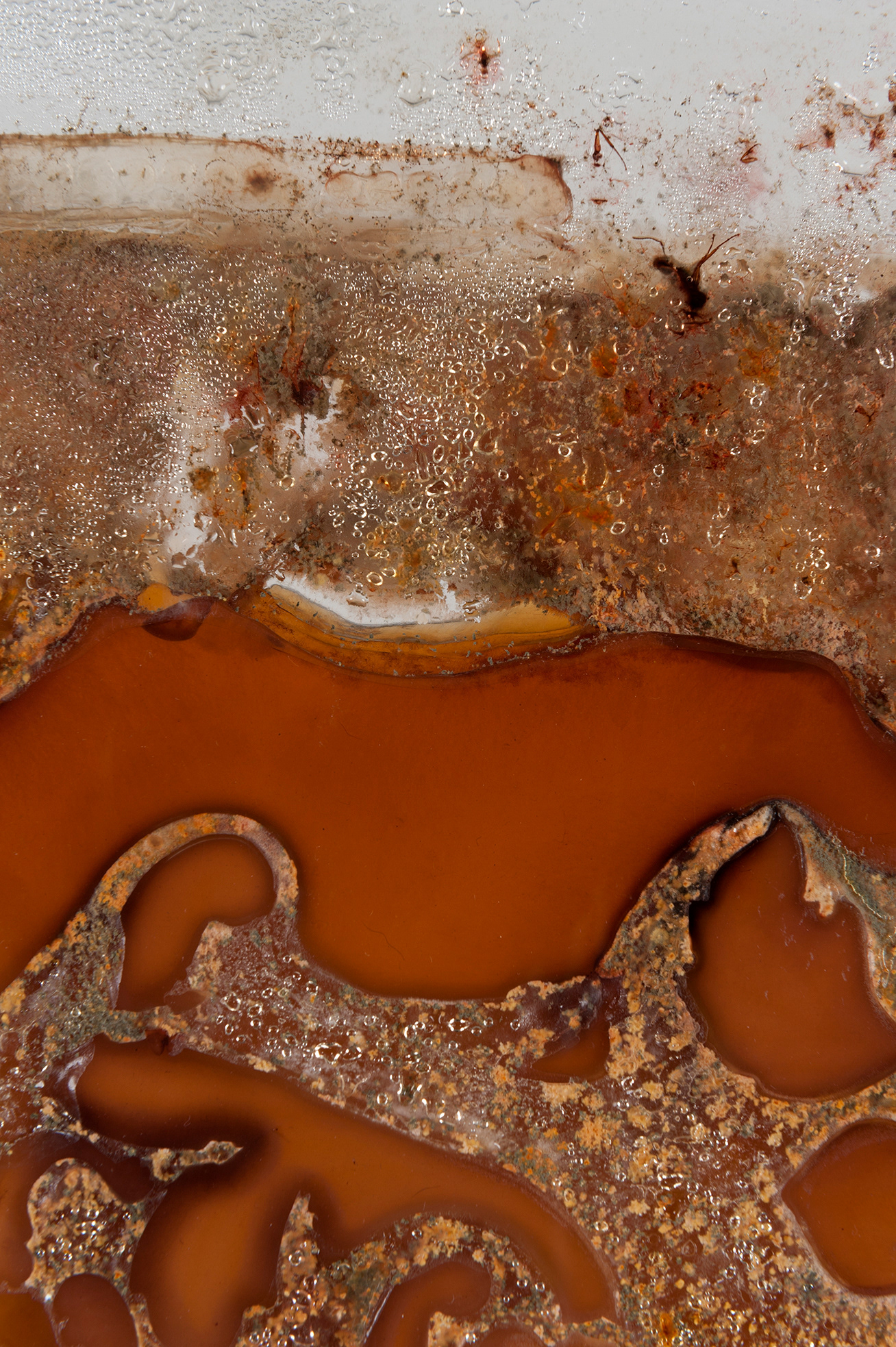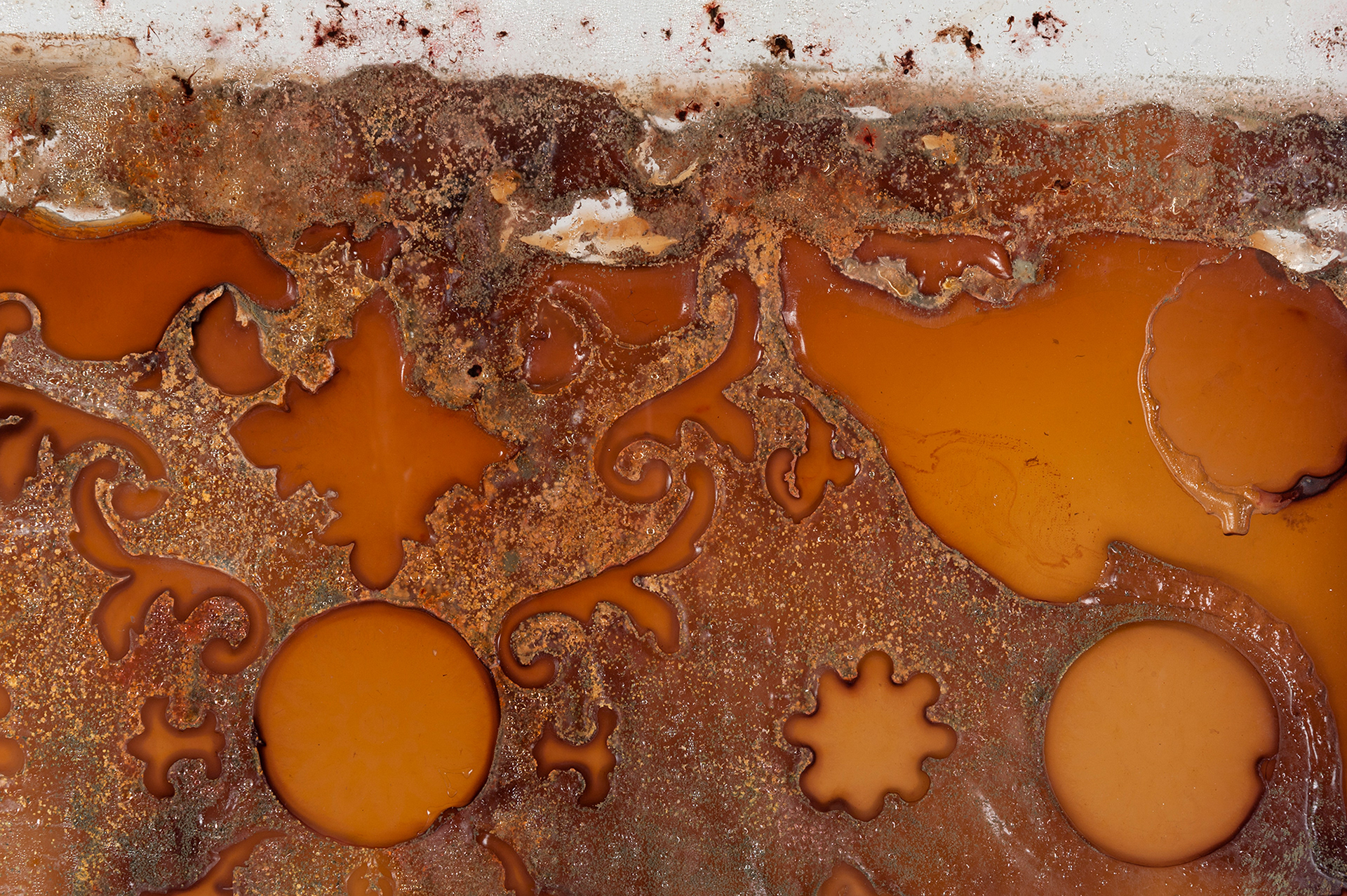Seethe began as a decorative ant farm made from sugar gel and colonial baroque stencils. It was meant to be a controlled "live print" system where ants carved their own patterns into a designed environment. But the ants died. Their bodies bloomed with mould. The gel fermented, blistered, and caved.
What emerged was not the clean trace of intention, but the slow surface of refusal. Seethe is the result of that collapse: a living print formed through breakdown, contamination, and rot.
Presented as an expanded interpretation of print, Seethe challenges the idea of print as reproduction. Here, nothing repeats. The decorative stencils dissolve. Fungal life spreads. The surface darkens.
This is a print of failure, of maternal excess, of gothic residue. The work does not document process. It digests it. It doesn’t mark. It stains. What remains is a sugar tomb for dead ants and domestic ambition: bloated, blistered, and still gently seething.



